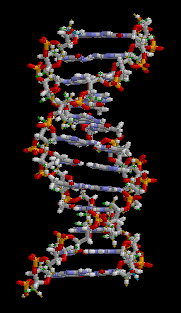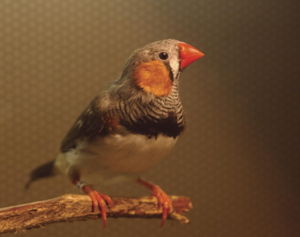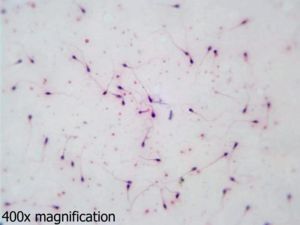Biology/Student Level
Biology is the science of life. Biologists study all aspects of Earth's living things, including the dynamic processes within them that enable them to survive. Those vital processes include the harnessing of energy and matter, the synthesis of the materials that make up the body, the healing of injuries, and the reproduction of the entire organism, among many other activities.
The mysteries of life have fascinated peoples throughout history, and curiosity about the physical beings of people, plants, and animals exists in every known society. Some of that curiosity arises from a desire to control life processes and to exploit natural resources. Pursuit of the answers has led to an understanding of organisms that has steadily improved our standard of living. Other questions come from a desire to understand nature, rather than to control it; and, in answering these, biological investigation has changed our view of the world.
The Scope of Biology
How does life begin? What features separate something that is alive from something that is dead or inanimate? Biologists use science to approach such fundamental questions. Biology also addresses practical questions. It is through applied biology that the health sciences became such effective healing arts and that the world's food supply has become safer and more plentiful.

Many independent scientific fields make up biology. Natural history (the study of individual species like white-tailed deer, sugar maple trees, box jellyfish and timber wolves) was one of the first areas to develop; in natural history, whole organisms are studied in an attempt to make sense of the order of nature. When plants and animals are considered in a context of how each affects the other and their environment, then the biologist's focus is on ecology. Some fields of biology focus on living organisms and their interactions within a certain realm of the earth, as in marine biology; others focus on particular aspects of living organisms, like their structure (anatomy) or function (physiology). Studies of animals form the field of zoology, whereas the study of plants is called botany. Medicine and the health sciences apply biology to understanding disease and to improving health.
The development of biology
This article explores just a few selected themes; those themes center on the origin of life (both 'life on earth' and the creation of a new infant) and are followed from ancient Greece to the present day. It is apparent that a philosophy of critical thinking, investigative methods that rely on empirical evidence, and the availability of technological tools have, together, accounted for how these ideas have changed. The development of biology has drawn on many more topics, and a much larger geographical area than referred to here, but the science of biology has had a continuous thread through the centuries that began with the ancient Greek philosophers, and has generally followed the winding pattern of advancement presented.
Biology in the Ancient World
People rely on plants and animals for sustenance, and paleolithic cave paintings show that careful observations of prey have been expressed for at least tens of millennia. In neolithic times, probably somewhere in the fertile Nile delta, planned interactions with certain plants and their seeds led to the establishment of agriculture. When the intellectual consideration of what plants are was combined with evidence-based experiments to understand their growth, then botany, the science of plants began.[1]
Anatomy and zoology both date back to at least the 4th century BCE, and the ancient Greek philosopher Aristotle.[2] In the first known book that discusses how life in the womb begins, Aristotle suggested that the mother provides the substance needed to create a new life, but that the father provides this base material with the essence of the child. He thought that the female's actual physical contribution to the baby was her menstrual blood, and that the male's corresponding contribution was his semen. Aristotle used logic and observation to arrive at his theory, which, in the main, was still accepted 2000 years later. His conclusion that the woman's portion was the mere soil for the man's seed, and that the man's donation supplied all the essential humanity, was probably influenced by the assumption (in his society) that women were less highly developed than men. A popular idea that grew out of Aristotle's musings was that sperm contained a perfect miniature version of the new baby - a homunculus.
The writings of the Greek scholars were preserved by the Romans, who added literature on the structure and function of animal and human bodies. The most influential of these was Galen; he performed public dissections and vivisections of animals, and used his findings to try to explain human illness. His writings survived the fall of Rome, and they formed a basis for the continuing advance of medicine.
Medieval Europe and the Arab World
With the Fall of Rome, many of the great Greek and Roman works were lost in Europe. Only a few survived, and few people could read them. The University of Padua was one of the rare places in Europe where organized learning continued, and later, Padua was to become one of the seats of the Enlightenment. Arab writers, in contrast, continued the work that had been established in the Roman empire. Copies of the old manuscripts were made, and new books of empirically derived medical procedures and theory were written. Later, when the Moors invaded Europe, these books became available to scholars there.
The European Renaissance and the 'Scientific Method'
When the authority of the 'classical' authors (such as Aristotle and Galen), and of religious doctrine (such as the teachings of the medieval Catholic Church), on the nature of living things began to be questioned in light of actual observation and experiment, the scientific method became established. In the early 16th century, scholars had returned to reading Galen in the original Greek, and they emphasized his superiority over his later interpreters, stressing his learning and the importance of anatomy in his view of medicine. The Dutch physician Vesalius (1514-1564), although contemptuous of Galen, followed his methods to produce a new anatomy of the human body, De humani corporis fabrica (On the Workings of the Human Body). He is often called the founder of modern human anatomy. [3]
By the 17th century, the advantages of empirical evidence over the opinions of authorities were seen by such writers as Girolamo Fabrici of Italy and Francis Bacon of England. Rather than memorize the texts of Galen, or perform ritualised dissections as 'homage' to Galen's findings, the anatomy and physiology of animals began to be carefully explored in completely new directions. The early European biologists mapped the paths taken by the nerves and veins that travelled between organs, and analyzed their findings in an attempt to find general principles of the organization and function of the body. Theories in biology were still very preliminary, but the evidence for ideas that explained an order to living things revolutionized thinking in biology.
The Englishman William Harvey studied how embryos develop by observations of hens' eggs and by dissecting pregnant deer and other mammals. He speculated that development proceeded from one to another of the fetal forms he found, imagining that each of these forms was a stage in a continuous process. Although other of his experiments famously revealed the circulation of the blood, and identified the workings of the heart as a pump, when it came to early development he failed to see any sort of rational explanation. He could not understand how discrete organs in the developing fetus could form out of the amorphous materials in the just pregnant womb or newly fertile egg. He chose a spiritual rather than a mechanistic explanation, postulating that the soul of the new individual was derived from the placement of sperm in the female tract, invoking the gist of the old Aristotlean argument. Still, he modified Aristotle's explanation by insisting that the male and female contributions were equally important. He refuted the notion that the fetus is made up by the specific materials contributed by the male, that grow because of the separate materials contributed by the female. Instead, he argued that "the material out of which the chick is formed in the egg is made at the same time it is formed" and that "out of the same material from which it is made, it is also nourished"[4]
The 18th and 19th centuries: seeing the links between lifeforms
As detailed examination of plant and animal species became common, and the knowledge was shared among people in many different parts of the world, similar arrangements of body structure were recognized in many different species. In the eighteenth Century, the Swedish naturalist Carolus Linnaeus proposed a way of systematically classifying all living things. His method gives a unique name to each kind of plant and animal, and organizes them in a way that stresses similarities of physical features. This naming system is still used today, and each known species has a unique name that biologists all over the world recognize. The name has two parts: genus and species, the two most refined categories in the classification scheme. The language is Latin, which was the common written language of scholars in Europe in Linnaeus' time. Human beings, for example, belong to the species homo sapiens (Latin for 'wise man') under the family hominidae (the great apes).
Although this systematic classification of living things became widely accepted, at first it did not include the idea that all living things were related. For more than a hundred years afterward, most highly educated thinkers assumed that complicated life forms (even mice!) could spring to life from a setting of inaminate objects (such as old rags and bread crumbs left in a dark corner). In the 19th century, Louis Pasteur of France showed that this common notion, spontaneous generation, was wrong. His life's work in bacteriology, along with the later work of the German physician Robert Koch, was important in establishing the germ theory of disease. That work helped bring the traditional practice of medicine into the health sciences and establish a scientific basis for the field of public health.
In England, Charles Darwin built on the idea of natural selection as a way to explain how diverse creatures might have common patterns of form. His observations of the variations of animal life on remote islands made him realise that individual birds, mammals and reptiles might thrive, or die, according to how well their characteristics 'fitted' their immediate habitat. He realised that individual members of any species were different from each other in ways that made some more successful than others in producing offspring. If these differences were passed on to the offspring, then the features that made some individuals successful would become more common in each generation. From this insight, he made the bold leap to realise that perhaps, in enough time, entirely new species might arise. His theories became incorporated into the theory of evolution which suggests that all present living things descended from past living things. The existence of common ancestors would account for similar body forms among descendents, and provided a plausible basis for the wide-spread existence of patterns of very similar features among groups of plants and animals: the very patterns that Linnaeus had used to formulate his categories in classification. This idea was not entirely new, but previous proponents had found it hard to understand how such incredibly diverse life forms might come about in the few thousand years that the world was thought to have existed. By Darwin's time, advances in Earth Science had found evidence that the earth was millions of years older than had been previously suspected, and this made the idea that organisms had evolved by many small, incremental changes over thousands of generations much more plausible. Evolutionary change from ancient life was accepted by biologists as a theory that explained both the diversity of life forms and the existence of patterns of common features.
In the late 19th century, an Austrian monk, Gregor Mendel, analysed how traits were inherited from generation to generation in garden peas, and he concluded that the male and the female parent contribute equally. Instead of a fuzzy 'blending' of the characteristics of parents, Mendel saw that discrete traits of each individual were inherited intact, apparently based on a sort of 'binary system' of alleles that coded for the quality of each of them. A pea might be wrinkled or smooth, for example, and the particular pair of alleles inherited by each pea then determined what the next generation would be like. Mendel also saw that these alleles might be either 'dominant' or 'recessive'. Together, these ideas allowed Mendel to predict the number of offspring that would have each characteristic, and the field of genetics began.
Technology advances Biology
First Glimpses of the Microscopic World
The advance of biological thinking depended on the communication of these ideas, and also on technology. Even the communication of ideas depends on technology; the printing press was an invention that facilitated the Enlightenment, and today, electronic communication has accelerated the rate of research. The availability of technical tools for experimentation has in a large part determined the course of progress.
The features of plants and animals have been understood in entirely different ways with technological advances that provided new ways to study them. The microscope, modified by Antoni van Leeuwenhoek in the 17th century, revealed details of structure in the bodies of organisms that had never before been suspected. One of the new sights that van Leeuwenhoek described were individual ovum and spermatozoa. Being familiar with the theories of Aristotle, he reported that he could actually see homunculi in the heads of the living sperm - an example of even a great scientist perceiving his expectations, rather than what was really there. Science is always influenced by past ideas. No scientist can consider any hypothesis, or analyze any set of experiemental results without using his or her mind, and all the blinkers and biases that come with it - however hard the good scientist tries to shake free and be rational and objective, that mind is both consciously and unconsciously stamped with the culture that produced it.
Not only was the structure of flesh and plants seen in new detail with the microscope, but new types of organisms were also revealed: micro-organisms that could not be detected with the naked eye. [5] And so, like all important technological advances in biology, the microsocope led to new ideas about living things. It was realised that tissues were composed of cells, the field of microbiology was born, and the ground was prepared for the germ theory of disease, an idea that helped bring the traditional practice of western medicine into the field of health science and modern medicine.
Further developments led to the modern compound microscope by the end of the 19th century, with much higher resolution. Cytology included studies of dividing cells, and the chromosomes of the nucleus became recognized as containing the genetic material that lay behind Mendel's laws of inheritance of traits.
Eventually, towards the mid-20th century, electron microscopes were built that could reveal the structure of cells at a magnification of tens of thousands of times. Science differs from religious and political doctrine in at least one major manner – tenets are not to be held sacred forever, but are always there to be questioned and tested. This has proved damaging for many of them, including the homunculus theory of fetal development. With improved optics and the new imaging techniques of scanning and transmission electron microscopes, that "little man" inside the sperm cell vanished forever.
Cell Biology begins
Cell biology began around 1900, with the discovery of the chromosomes and the understanding of mitosis and meiosis. Also, with the re-discovery of Mendel's fundamental law of heredity, genetic linkage analysis allowed the correlation of specific plant or animal traits to be ordered as gene loci in the first genetic maps.[6] The culmination of this work and evidence from cytogenetics, led to the concept of genes as heritable traits that had a physical structure in the chromosomes;
With the development of the electron microscope ultra-high power examination of cells was possible and the field of cell biology began to unravel the inner 'architecture' of cells, discovering new organelles like mitochondria and chloroplasts. Closer examination of the structure of the cell was combined with the ability to physically separate out the components of the cells using methods from biochemistry . The important techniques that allowed this analysis include ultracentrifugation and gel electrophoresis. Advances in this new field of cell biology confirmed the concept that living things were composed of cell units and extended the understanding of just how cells carried out life processes.
Molecular biology, and a revolution in understanding
In the 20th century, the properties and roles of some of the large molecules (macromolecules) found in living things were examined. Proteins, which are one type of macromolecule, have shapes that give them special properties. Some proteins, known as enzymes, have specialized sites able to catalyze the chemical reactions critical for metabolism. Other proteins act as building blocks that make up the filaments that support the cytoplasm of cells, or lend such qualities as waterproofing to skin (keratin) or tensile strength to tendons (collagen). Proteins also provide an elaborately configured signaling network that guides responses to the environment. These sophisticated activities range from the selective transport of ions and food in and out of cells, to the ability of immune cells to recognize and attack only foreign germs, rather than rain friendly fire on other parts of the body. Strikingly, as protein sequences were compared between species, biologists appreciated a new variation on the old theme that research in comparative anatomy had raised three hundred years before. First, recurring anatomical patterns had been recognized in different animals, like the arrangement of bones in a bat's wing, a seal's flipper and a man's arm; and later, the molecular structures and shapes of the various families of proteins were recognized to be similarly repeating. The amino acid sequences within the protein families even show some similarity between kingdoms like bacteria and animals confiriming the idea that all living things are related.

By 1953, the painstaking x-ray studies of Rosalind Franklin allowed the imagination of James Watson and Francis Crick to seize upon the structure of DNA.[7] The double helix structure of that molecule revealed how information might be coded and passed from generation to generation, by showing how the DNA molecule could act as a 'template' for the synthesis of both itself, and a related molecule, RNA. Crick and others went on to propose that small RNA molecules might serve as adaptors that could be made from such a template, and be used to assemble amino acids to build proteins.
With these advances, a new view of the origin of life forms on earth emerged. "It is now widely believed that almost four billion years ago, before the first living cells, life consisted of assemblies of self-reproducing macromolecules".[8]
Studying the biochemistry of RNA and proteins involved purifying unstable compounds from sources that also contained enzymes for their breakdown. Work advanced, but successful experiments required labor-intensive manipulations that could take several days in refrigerated 'cold rooms', without substantial delay between steps. Consequently, pinpointing the mechanics of how proteins were assembled in the cell, were heroic enterprises requiring marathon proceedures (often performed by scientists dressed in parkas!).
Attention turned to the DNA sequences that coded for proteins, and the genetic traits that Mendel had observed in his peas were found to have physical correlates in the genes that these sequences provided. DNA is more stable than RNA and most proteins, and the experiments could be performed in usual laboratory conditions. By the end of the 20th century, the technique of PCR allowed experiments on tiny samples of DNA to be done very efficiently, with automated reactions, and progress accelerated. Superfamilies of genes were found in different organisms that underlay the existence of those families of related proteins that were identified in diverse tissues and diverse species.

Understanding the ultrastructure of cells along with the chemical and physical properties of the organelles brought more new ideas to biology. Mitochondria are tiny organelles found in almost all cells, and these are the factories that produce energy for the cell. These mitochondria, so essential for living cells, have their own DNA and ribosomes - but their form is more similar to those of bacteria rather than mammalian cells. These observations led Lynn Margulis to propose an outlandish hypothesis for the origin of mitochondria being derived from bacteria assimilated into eukaryotic cells. Her endosymbiotic theory was finally published after being "rejected by about fifteen scientific journals".[9] [10], but is widely accepted today. These energy-producing organelles of animal cells are not the only organelles found that derived from a different life form; the chloroplasts of plant cells are another.
Back to the baby
The age-old question of how a new baby came to be born of man and woman took equally unexpected turns. The single cell from which every human develops does not receive equal genetic contributions from mother and father, after all. One of the biggest differences in the parents contribution to their baby is found to be cell organelles, specifically mitochondria. Each individual human being is made up of cells with "only" the mother's mitochondria and their DNA.
Even genes in the nucleus of germ cells (egg and sperm) do not always act identically in the newly fertilized egg. Some genes are marked in the germ cells to be either active or inactive in the new embryo, by the addition of chemical modifiers to the DNA. This so-called imprinting of genes by parental origin is another asymmetry that had been unsuspected. Oddly, this confirmed some of the suspicions of Aristotle after all, but in the very opposite way to that imagined by the ancients. "Genes expressed from the paternally inherited copy generally increase resource transfer to the child, whereas maternally expressed genes reduce it." [11] In other words, the genetic material provided by the father has a role slanted to provide nourishment to the fetus whereas the same genes, when inherited through the mother, act differently. The placenta grows from the same fertilized egg that builds the baby, and nourishes the new infant from the mother's womb - but it's the father's genes that are more important for the placental membrane's success in obtaining nutrients. It's as though there is a 'battle' between the father's genes and the mother's genes - as if the father's genes want the biggest baby possible, while the mother's genes want a small baby to protect the mother.[12]
The continuing story
By the end of the 20th century, progress in molecular biology had given rise to the Human Genome Project, an ambitious vision to sequence the DNA of every single human gene. Not only was that vast project, involving hundreds of laboratories in many different countries, completed ahead of schedule [13], but we now also have the DNA sequences of many other species with which to compare the human genome. These gene sequencing projects have required close collaborations with both engineering and computer sciences, and those efforts have provided new technological tools. In a sense, technology has now been advanced by modern biology (returning the favor).
In 2006, we can not only map out how chromosmes have evolved across species, but use this information to trace our own distant ancestry to the most primative life forms. Nevertheless, biology remains a science that has only begun to provide a basis for understanding life. The human genome project, so far from answering all our questions, instead opened up many new ones. One of its biggest surprises was the realisation of how few genes it takes to make a human being - just 28,000 or so, not many more than is needed to make simple animals, and fewer than the number of genes in many plants.
However, it seems that identifying the sequence of our DNA is not enough, to really unravel our genetic code, biologists must start the difficult process of understanding all the ways that these genes can be processed and just how they interact with each other. And so we come full circle, again relying on the traditional fields of biology to unravel the secrets that are not apparent from knowing the genomic sequences alone.
References
- ↑ see Jared Diamond 'Guns, Germs, and Steel' (1997) ISBN 0-393-31755-2
- ↑ See "Aristotle's Biology" in The Stanford Encyclopedia of Philosophy [1] for a summary of Aristotle's biology and references to works by scholars interpreting his biological ideas.
- ↑ Nutton V (2002) Portraits of science. Logic, learning, and experimental medicine Science 295:800-1 PMID 11823624
- ↑ Van Speybroeck L et al (2002) Theories in early embryology: close connections between epigenesis, preformationism, and self-organization Ann NY Acad Sci 981:7-49 PMID 12547672
- ↑ Anton van Leeuwenhoek. Encyclopedia of World Biography 2nd ed. 17 Vols. Gale Research, 1998. Reproduced in Biography Resource Center. Farmington Hills, Mich.: Thomson Gale. 2006
- ↑ Sturtevant, A. H. (1913) The linear arrangement of six sex-linked factors in Drosophila.
- ↑ Watson JD, Crick F (1953) The Molecular structure of Nucleic Acids: a structure for deoxyribose nucleic acid Nature 171:737-738. The National Library of Medicine's PDF copy in the Francis Crick Documents Collection.
- ↑ Taylor WR (2005) Stirring the primordial soup Nature 434:705 PMID 15815609)
- ↑ Lynn Sagan, "On the origin of mitosing cells" J. Theoretical Biology 14(3):255-74 (1967). Abstract
- ↑ John Brockman, The Third Culture, New York: Touchstone, 1995, 135.
- ↑ Constancia M et al (2004) Resourceful imprinting Nature 432:53-7 PMID 15525980
- ↑ Haig D (1992) Genomic imprinting and the theory of parent-offspring conflict. Seminars in Developmental Biology 3:153-160.
- ↑ President Clinton announces the completion of the first survey of the entire human genome. June 25, 2000


